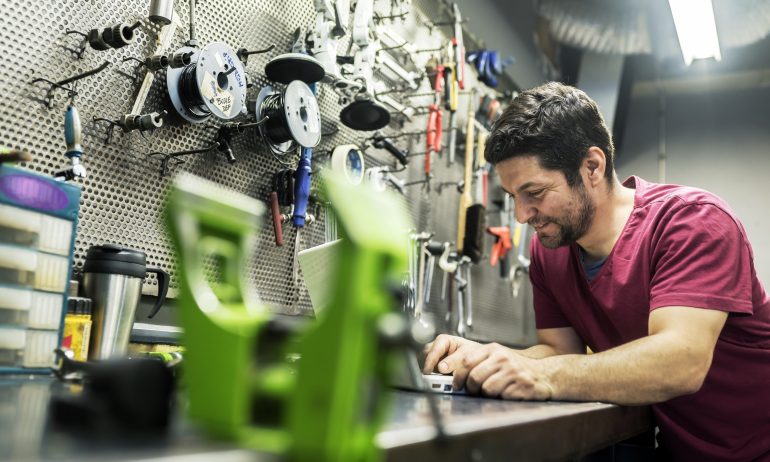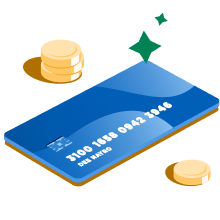SBA Disaster Loan: What It Is and How to Get Emergency Assistance

Many or all of the products featured here are from our partners who compensate us. This influences which products we write about and where and how the product appears on a page. However, this does not influence our evaluations. Our opinions are our own. Here is a list of our partners and here's how we make money.
SBA disaster loans provide financing to help small businesses recover from physical and economic damage caused by a declared disaster. These loans offer low interest rates, long repayment terms and may fund faster than other types of SBA loans.
Here’s what you need to know about SBA disaster loan assistance and how to get a loan for your business.
How much do you need?
We’ll start with a brief questionnaire to better understand the unique needs of your business.
Once we uncover your personalized matches, our team will consult you on the process moving forward.
What is an SBA disaster loan?
SBA disaster loans are small-business loans issued by the U.S. Small Business Administration in order to assist victims of declared disasters, such as hurricanes, wildfires, earthquakes and flooding, among other emergencies.
These loans are available to businesses, nonprofit organizations, homeowners and renters to help repair or replace damaged or destroyed property. SBA disaster loans are also available to help small businesses recover from economic injury as the result of a disaster — or as the result of losing an essential employee who was called-up to active service as a military reservist.
Types of SBA disaster loans
There are four different types of SBA disaster loans:
Home and personal property loans. Homeowners can use these loans to replace or repair (but not upgrade) their primary residence. Renters and homeowners can also apply for financing to repair or replace personal property, such as clothing, furniture, cars and appliances.
Business physical disaster loans. Businesses and most private nonprofits can use this financing to repair or replace business property, machinery, equipment, fixtures and inventory. Rental property owners can also use these loans to make repairs or replace damaged items within their buildings.
Economic injury disaster loans (EIDL). EIDLs provide working capital to small businesses that can’t pay for their typical operating expenses as the result of a disaster.
Military reservists economic injury disaster loans (MREIDL). This type of loan offers financing to help businesses pay their everyday expenses that they can no longer afford because an essential employee has been called-up to active service as a military reservist.
SBA disaster loan rates and terms
Although the rates and terms you receive will ultimately vary based on your individual needs and circumstances, here are the features you can expect to see based on each type of disaster loan:
Type of SBA disaster loan | Maximum loan amount | Repayment term | Interest rates* |
Home and personal property loan |
| Up to 30 years. |
|
Business physical disaster loan | Up to $2 million. | Up to 30 years. |
|
Economic injury disaster loan | Up to $2 million. | Up to 30 years. | Up to 4%. |
Military reservists economic injury disaster loan | Up to $2 million. | Up to 30 years. | Up to 4%. |
*The SBA is offering a 0% interest rate for 12 months on all disaster loans approved through September 30, 2023.
» MORE: Current SBA loan rates
SBA disaster loan requirements
To qualify for a disaster loan, you’ll need to meet a set of SBA loan requirements that will largely vary based on your situation and the type of financing you’re looking to get. Here are some general criteria you should keep in mind:
Be in a declared disaster area
With the exception of the MREIDL, you’ll need to be located in a declared disaster loan to be eligible to apply for SBA financing.
Meet the specific requirements of your loan type
Each of the different SBA disaster loans will have unique requirements that you’ll need to meet.
For example, if you want to apply for an EIDL, you’ll need to be a small business, small agricultural cooperative or an eligible private nonprofit. You’ll also need to show that you’ve suffered economic injury as a result of the relevant disaster and the SBA needs to be able to determine that you can’t access credit anywhere else.
Provide collateral
You may need to provide collateral to secure your SBA disaster loan:
SBA disaster loan | Collateral requirement |
Home and personal property loan |
|
Business physical disaster loan | Loans of more than $25,000. |
Economic injury disaster loan | Loans of more than $25,000. |
Military reservists economic injury disaster loan | Loans of more than $25,000. |
Show repayment ability
You need to be able to show your ability to repay your SBA disaster loan. The SBA will use factors such as your personal credit score, personal finances and/or business finances to make this determination.
How to apply for an SBA disaster loan
Unlike other types of SBA loans, you apply for SBA loan disaster assistance with the U.S. Small Business Administration directly. Follow these steps to get financing:
1. Verify your eligibility
Before you begin with the actual application process, you should verify that your business is located in a declared disaster area and that you’re eligible for one of the available funding options.
You should also look for your applicable filing deadline. When the SBA publishes a disaster declaration with relevant financing information, it will specify when the application period begins and ends. You’ll want to make sure you submit your application before the window closes.
For MREIDLs, you can apply for financing any time beginning on the date your employee receives notice of expected call-up and ending one year after the date that the employee is discharged or released from active service.
2. Prepare your application
There are three ways you can apply for an SBA disaster loan: Online, by mail or in person at a Discovery Recovery Center. The SBA recommends applying online to receive the fastest processing times.
Regardless of your application method, you’ll need to provide:
Personal contact information.
Social security number.
Deed or lease information (if relevant).
Insurance information.
Financial statements and information, including personal and business income, monthly expenses and account balances.
Employer identification number.
IRS Form 4506-C, which gives the IRS permission to provide the SBA with your tax return information.
If you apply online, the disaster loan assistance portal will guide you through the application and additional information you’ll need to provide. For paper applications, you can find the documents you’ll need on the SBA website.
It’s important to note that anyone with 20% or more ownership in the business will be required to sign an SBA personal guarantee.
3. Submit your application and wait
Once everything is complete, you can submit your application. The SBA will process your loan package — which may include sending a property inspector to determine the cost of your physical damage.
Next, you’ll work with a loan officer who may request additional information or review insurance documents and recommend a loan amount. According to the SBA, it strives to provide loan decisions within two to three weeks of receiving your application.
This funding timeline can vary, however, based on the number of applications the agency anticipates receiving each year. If the SBA receives more than 250,000 applications per year, for example, it anticipates that processing times will be four weeks or longer. The two-to-three week estimate is based on receiving less than 50,000 applications per year.
4. Close your loan and receive funds
When you receive approval, the SBA will send loan closing documents for you to review. You should read through any business loan agreement information thoroughly and ask your assigned case manager any questions you may have.
Once you sign the documents, you’ll receive an initial disbursement within five business days.





